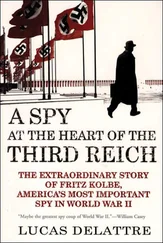WRITER’S NOTE
In researching this novel, I traveled to Italy and Germany. But this book grew out of my early Catholic education and a lifelong fascination with Fatima. Over the past two thousand years, the phenomena of Marian visions have occurred with surprising regularity. In modern times, the visions at La Salette, Lourdes, Fatima, and Medjugorje are most notable, though there are countless other lesser-known experiences. As with my first two novels, I wanted the information included in the story to both educate and entertain. Even more so than with the first two books, this one contains a wealth of reality.
The scene at Fatima, depicted in the prologue, is based on eyewitness accounts, most notably Lucia herself, who published her version of what happened in the early part of the twentieth century. The Virgin’s words are Hers, as are most of Lucia’s. The three secrets, as quoted in chapter 7, are verbatim from the actual text. Only my modification detailed in chapter 65 is fictional.
What happened to Francisco and Jacinta, along with the third secret’s curious history—how it stayed sealed in the Vatican until May 2000, read only by popes (chapter 7)—is all true, along with the Church’s refusal to allow Sister Lucia to speak publicly about Fatima. Sadly, Sister Lucia died shortly before this book was published, in February 2005, at the age of ninety-seven.
The La Salette visions from 1846, as mentioned in chapters 19 and 42, are accurately related—as is the history of those two seers, their biting public comments, and Pope Pius IX’s poignant observations. That particular Marian vision is one of the strangest on record and was mired by scandal and doubt. Secrets were part of the apparition and the original texts are indeed missing from the Vatican record, which further clouds what may have happened in that French Alpine village.
Medjugorje is similar, though it stands alone among Marian visions. Not a single event, or even several visions spread over a few months’ time, Medjugorje involves thousands of apparitions over more than two decades. The Church has yet to formally acknowledge anything relative to what may have happened, though that Bosnian village has become a popular pilgrimage site. As noted in chapter 38, there are ten secrets associated with Medjugorje. Including this scenario within the plot seemed hard to resist, and what happens in chapter 65, linking the tenth secret of Medjugorje and the third secret of Fatima, evolved into the perfect way to finally prove that God exists. Yet, as Michener notes in chapter 69, even with this proof, the ultimate belief still comes down to faith.
The predictions attributed to St. Malachy, as detailed in chapter 56, are all true. The accuracy of the labels associated with the predicted popes is uncanny. His final prophecy concerning the 112th pope, one to be named Peter II, along with his statement that “in the seven hilled city the dreadful judge will judge all people,” are likewise accurate. Currently John Paul II is the 110th pope on St. Malachy’s list. Two more to go to see if St. Malachy’s prophecy will be fulfilled. Similar to Rome, Bamberg, Germany, was once labeled the seven hilled city. I learned that fact while there and, after visiting, knew that this enchanting locale had to be included.
Sadly, the Irish birthing centers depicted in chapter 15 were real, as was all the pain they caused. Thousands of babies were taken from their mothers and adopted away. Little or nothing is known of their individual heritage and many of those children, now adults, have wrestled, as Colin Michener did, with the uncertainty of their existence. Thankfully, those centers no longer exist.
Equally sad is the plight of the Romanian orphans depicted in chapter 14. The tragedy befalling these children is ongoing. Disease, poverty, and desperation—not to mention exploitation by the world’s pedophiles—continue to ravage the ranks of these innocent souls.
All of the Church’s procedures and ceremonies are accurately reported, save for the ancient silver hammer being tapped on the dead pope’s forehead in chapters 30 and 71. That procedure is no longer used, but its former drama was hard to ignore.
The divisions within the Church between conservative and liberal, Italian and non-Italian, European and rest-of-the-world are real. The Church currently struggles with this divergence, and the conflict seemed a natural backdrop for the individual dilemmas faced by Clement XV and Alberto Valendrea.
The Bible verses noted in chapter 57 are, of course, accurate and are interesting when read in context with the novel’s plot. Likewise the words of John XXIII in chapters 7 and 68 when, in 1962, he addressed the opening session of the Vatican II council. His hope for reform—so the earthly city may be brought to the resemblance of that heavenly city where truth reigns —is fascinating considering he was the first pope to ever actually read the third secret of Fatima.
The third secret itself was released to the world in May 2000. As Cardinals Ngovi and Valendrea discussed in chapter 17, references to a possible papal assassination could explain the Church’s reluctance to publicize the message sooner. But overall, the riddles and parables contained within the third message are far more cryptic than threatening, which caused many observers to wonder if there might be more to the third secret.
The Catholic Church is unique among man’s institutions. It has not only survived for more than two millennia, but continues to grow and prosper. Yet many wonder what will be its fate in the coming century. Some, like Clement XV, want to fundamentally change the Church. Others, like Alberto Valendrea, want a return to its traditional roots. But perhaps Leo XIII, in 1881, said it best.
The Church needs nothing but the truth.

ONE
COPENHAGEN, DENMARK
TUESDAY, MAY 15
12:40 PM
COTTON MALONE TYPED THE WEB ADDRESS WITH TREMBLING fingers. Like a phone that rings in the middle of the night, nothing about an anonymous message was ever good.
The note had arrived two hours ago, while he’d been out of his bookshop on an errand, but the employee who’d accepted the unmarked envelope forgot to give it to him until a few minutes ago.
“The woman didn’t say it was urgent,” she said in her defense .
“What woman?”
“Chinese lady, dressed in a gorgeous Burberry skirt. She said to give it only to you.”
“She used my name?”
“Twice.”
Inside had been a folded sheet of gray vellum upon which was printed a Web address with a dot-org suffix. He’d immediately climbed the four flights of stairs to his apartment above the bookshop and found his laptop.
He finished typing and waited while the screen blackened, then a new image appeared. A video display console indicated that a live feed was about to engage.
The communications link established.
A body appeared, lying on its back, arms above the head, ankles and wrists bound tight to what looked like a sheet of plywood. The person was angled so that the head was slightly beneath the feet. A towel wrapped the face, but it was clear the bound form was a woman.
“Mr. Malone.” The voice was electronically altered, disguising every attribute of pitch and tone. “We’ve been waiting. Not in much of a hurry, are you? I have something for you to see.”
A hooded figure appeared on the screen, holding a plastic bucket. He watched as water was poured onto the towel that wrapped the bound woman’s face. Her body writhed as she struggled with her restraints.
Читать дальше













